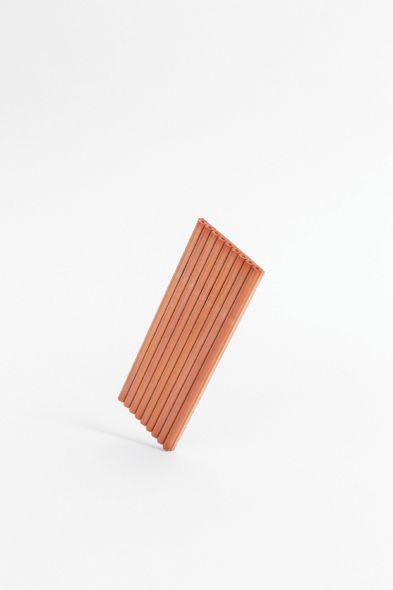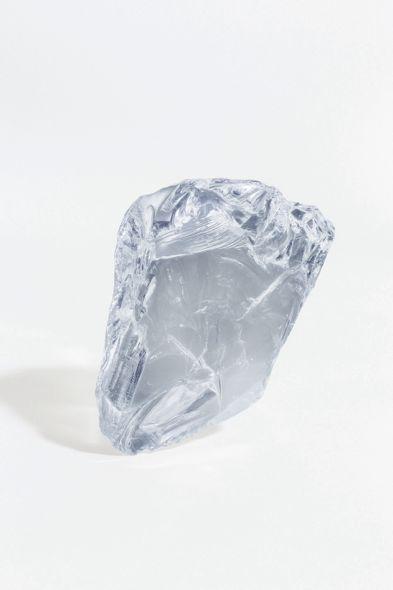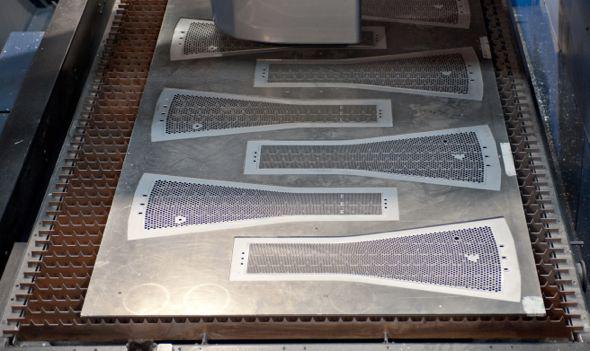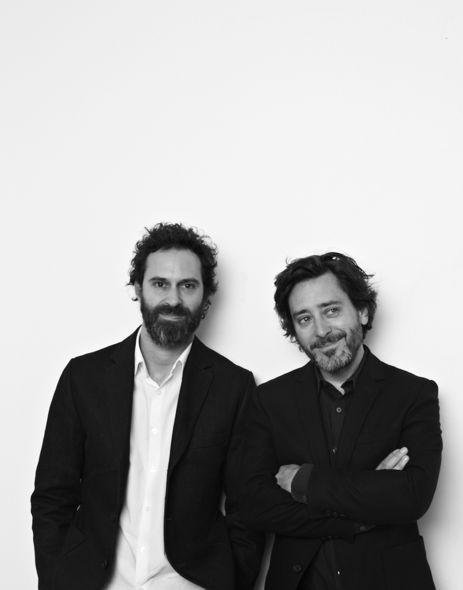The design process is more transparent than ever now that designers have websites and the potential to release online videos of their work. But most design exhibitions focus on finished products, sometimes accompanied by sketches or plans. They tend to gloss over the abstract beauty inherent in an object that’s still in the making.
So it was intriguing that when London’s Design Museum asked internationally recognized designers Edward Barber and Jay Osgerby, responsible for such high profile objects as a new 2-pound coin for the Royal Mint and the 2012 Olympic torch, to curate a show, they chose some 20 familiar pieces of design not in their completed stage, but in surprising incarnations caught somewhere midway between conception and birth. The exhibit includes examples of their own work and the work of others, but reflects their attachment to the production process and its influence on their creative methods.

Courtesy of the Design Museum
“We have always been fascinated by the making process as it is an integral part of our work,” the designers said in a press release. “We have curated an exhibition that will provide a platform to capture and reveal a frozen moment in the manufacturing process and unveils an everyday object in its unfinished state. Often the object is as beautiful, if not more so, than the finished product!’

Courtesy of the Design Museum
In the Making opens today and runs until May at the Design Museum in London and includes semi-realized cricket bats, felt hats, shoes, boots, marbles, light bulbs, whistles, pencils, coins, horns, optic lenses, MacBooks, and the above-mentioned commemorative coin and Olympic torch.

Photo by Lee Mawdsley. Courtesy of the Design Museum.
The exhibition seems cannily in keeping with the rise of the Maker movement and a larger social push to reconnect with this sort of hands-on process. Osgerby told the Guardian that his fascination with how things are made dates back to childhood, when he spent playtime at the hat factory next door rifling through bins of leather and felt. Barber spent his childhood weekends helping out his DIY dad.
“When we were children, we had more contact with people who made things than most kids do today,” Barber told the Guardian. “If we needed a broom, we would go to the man who made brooms. And I would always go and watch my bike getting fixed.”

Photo by Carl Court/AFP/GettyImages
Osgerby said that the designers were “trying to get people excited about the making process again,” and to give people interested in design a thought-provoking glimpse of the thinking and techniques involved in making various familiar objects that litter our visual landscape.

Photo by Alisa Connan. Courtesy of the Design Museum.
